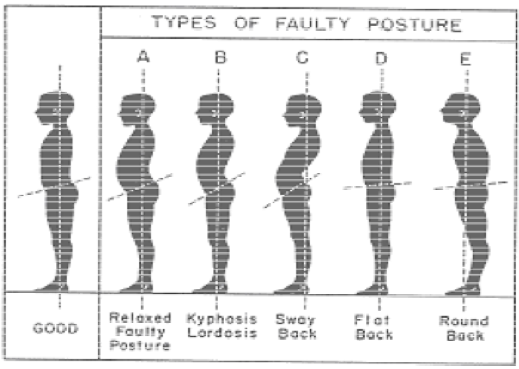Posture And Carpal Tunnel
Carpal Tunnel, often abbreviated CTS, can occur in a person as a result of repetitive activity, such as those we do at computers, in athletics, or on the job site that requires us working with our hands. According to the OSHA, this syndrome affects millions of Americans each year. You may not even know that you have Carpal Tunnel Syndrome because the pain can occur months or years after the damage is being done. There are many treatment options for CTS, from surgery to simple exercises you can do at home. THINGS YOU MAY NOT KNOW ABOUT CARPAL TUNNEL The U.S. Department of Labor has concluded that Carpal Tunnel Syndrome is the "chief occupational hazard of the 90's"-disabling workers in epidemic proportions. Carpal tunnel syndrome results in the highest number of days lost among all work related injuries. Almost half of the carpal tunnel cases result in 31 days or more of work loss. -National Center for Health Statistics. While women account for about 45% of all workers in the workforce, they experience nearly 2/3's of all work-related Repetitive Strain Injuries. A DR’S VIEW ABOUT CARPAL TUNNEL SURGERY: Surgery is not an option that this author recommends for treating CTS. We consulted Dr. Anthony J Viera (one of the main focuses of his practice is Carpal Tunnel Syndrome) and he had a lot to say. First, CTS surgery costs between $3,500 and $11,000. That’s a lot of dough, and let’s be honest, most of us don’t have it. Furthermore, only 70% of surgeries result in a full recovery from the syndrome. That’s a scary percentage if you ask me. And, says Dr. Viera, those who have undergone surgery (full recovered or not) often need to change their activities at their job or even take new occupations. (American Family Physician - July 15, 2003) The point that this author is trying to make is, don’t jump right into surgery without looking at all of your options. I am not a medical doctor, but what we are about to discuss has changed my life and has the potential to change yours. POSTURE:
I would like you to take a very good look at this picture. Most people fall in to one of the faulty postures depicted here.  These postural deviations occur because of a:
Your body will adapt and respond to pain or lack of quality of movement by altering your body posture. Balance between the muscles in the front and back of your body will be disturbed causing increased tension. The same will occur with the muscles on the left of your body versus the muscles on the right side of your body. If you favor one side the other side will compensate and result in pain in some area of your body. Your body will compensate and one joint in your body will appear higher, lower (also known as asymmetry) or rotated in comparison to its opposing joint/side. DYNAMIC TENSION (see the “Round Posture” diagram in the image above) When your body is experiencing dynamic tension, the body muscles have been altered and the back muscles have to work much harder keeping your person upright (most likely the muscles will be in spasm) with the front muscles shortened and inactive (they will be tight and weak). Overactive muscles in the front and severe rounding of the back leads to poor Dynamic Tension and Balance. ASYMMETRICAL JOINTS AND ROTATION When your body is experiencing asymmetrical joints and rotation…
Due to our sedentary and repetitious lifestyles we develop these postural problems (Rotation, Asymmetry and Dynamic Tension) and muscle imbalances that cause our bodies to compensate with different postural deviations. We sit too much causing our hip muscles to shorten and become weak, our hamstrings to shorten increasing the curvature in our lower spine placing more pressure on the lumbar disc leading to sciatica. Our upper backs become round causing our heads to come away from the torso that cause neck pain and muscle spasm between the shoulder blades and migraines. Let me ask you a question. When was the last time you…
Can you see what I am talking about? As children we did all these things and our backs were fine. We were constantly putting our bodies through a variety of movement and were not stuck in front of the TV and a PC. We do not have this variety of movement today, and our bodies are motion deprived. Today we are doing the same repetitious movements every single day and we are movement deprived creatures, there is no variety in our daily movements and this leads to postural compensation and ultimately wear and tear on your joints like your lumbar discs causing lower back pain and sciatica. Improving posture and doing physical therapy exercises are a great way to discover a new way of recovering from CTS. How do you know if you have bad posture? Read more about having a posture evaluation for carpal tunnel.
|
|